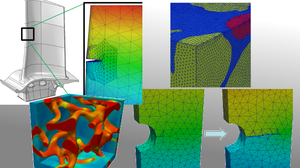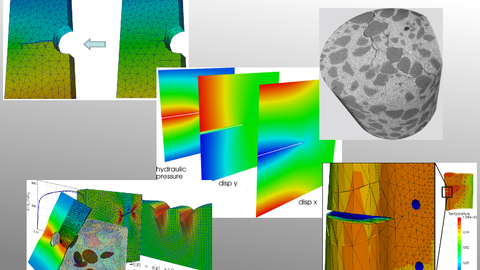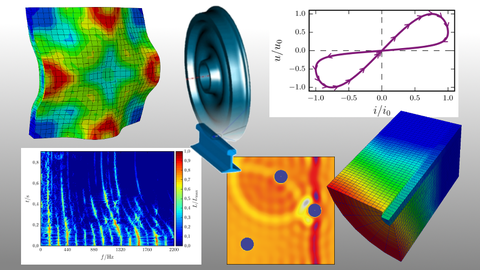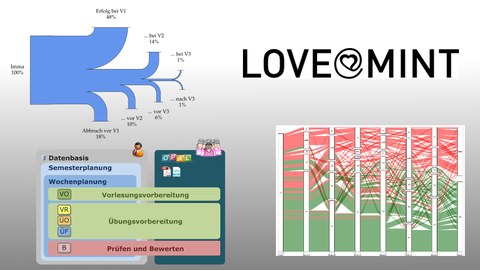Research
High performance concrete and dual-phase-steels, ceramics and fibre-reinforced materials - these complex materials play an important role at the Institute of Mechanics and Shell Structures. In many cases the accurate modelling of these materials as it is required for high-tech applications is a challenge. At the institute computational methods are developed that can be used to predict the often multyphysical behaviour of modern materials on different scales and in a multiscale sense. The research projects at the institute are categorised into the following five research fields:
Research
The central research fields at the Institute of Mechanics and Shell Structures are efficient computational methods for problems in fracture mechanics for different materials, multiscale techniques for fracture mechanics problems and heterogeneous materials as well as material modelling of complex materials and multifield problems.
In the field of fracture mechanics numerical methods for the simulation of three dimensional crack propagation based on the eXtended Finite Element Method (XFEM) are developed. Applications are e.g. the prediction of frature developments in mechanically and thermally highly loaded regenerated turbine blades of aero-engines, the life time prediction of high performance concrete under cyclic loadings as well as the crack nucleation and propagation in polycrystalline micro structures of dual phase steels during forming processes.
For these applications also multiscale methods are developed to be able to consider the micro structural behaviour of the considered materials as well as its influence on crack propagation. Another research area in the field of fracture mechanics is the XFEM based simulation of hydraulic fracturing processes for geothermal energy harvesting. For the improvement of complex manufacturing processes such as tailored forming it is necessary to extend the material modelling for the hybrid engineering parts. This especially concerns the forming process and the complex material behaviour within the joining zone that also include multiphysical effects. Therefor an accurate multifield modelling is required.
Another research field at the Institute of Mechanics and Shell Structures is the development of computational techniques. This concerns especially the improvement of Finite Element Methods and eXtended Finite Element Methods regarding robustness, accuracy and applicability to specific simulation tasks. Within the research field continuum dynamics, special focus is set on wave propagation in heterogeneous materials and non-material boundary conditions. Amongst others, time-harmonic and impact exposures are dealt with.
Besides the transfer of recent research results to education, engineering education itself is an object of research. Herein, the main goal is to improve study progress and thus save personal as well as social ressources.
Of major importance for the research at the institute is the interdisciplinary character, which manifests in cooperations with partners from other disciplines such as materials sciences, biology, mathematics, and psychology.




